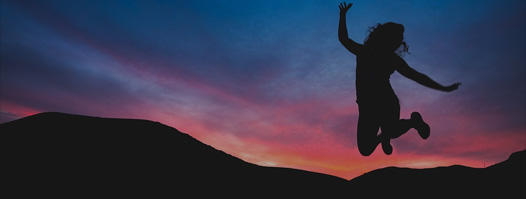- Abuse & The Abuser
- Achievement
- Activity, Fitness & Sport
- Aging & Maturity
- Altruism & Kindness
- Atrocities, Racism & Inequality
- Challenges & Pitfalls
- Choices & Decisions
- Communication Skills
- Crime & Punishment
- Dangerous Situations
- Dealing with Addictions
- Debatable Issues & Moral Questions
- Determination & Achievement
- Diet & Nutrition
- Employment & Career
- Ethical dilemmas
- Experience & Adventure
- Faith, Something to Believe in
- Fears & Phobias
- Friends & Acquaintances
- Habits. Good & Bad
- Honour & Respect
- Human Nature
- Image & Uniqueness
- Immediate Family Relations
- Influence & Negotiation
- Interdependence & Independence
- Life's Big Questions
- Love, Dating & Marriage
- Manners & Etiquette
- Money & Finances
- Moods & Emotions
- Other Beneficial Approaches
- Other Relationships
- Overall health
- Passions & Strengths
- Peace & Forgiveness
- Personal Change
- Personal Development
- Politics & Governance
- Positive & Negative Attitudes
- Rights & Freedom
- Self Harm & Self Sabotage
- Sexual Preferences
- Sexual Relations
- Sins
- Thanks & Gratitude
- The Legacy We Leave
- The Search for Happiness
- Time. Past, present & Future
- Today's World, Projecting Tomorrow
- Truth & Character
- Unattractive Qualities
- Wisdom & Knowledge
Health & Wellness Wednesdays
Doing Something That Scares You
My daughter is currently in swimming lessons and she JUST started dunking under the water. For the longest time she was terrified to put her face and head under the water.
I know that my daughter is a cautious child and it takes her awhile to overcome her fear and do something anyway - but I also know that when she finally does something that scares her, she is so proud of herself!
She just turned 5 - and she was still struggling with being too scared to dunk under. So we talked about it and I told her that once she turned 5 I was sure she would be very brave and would start dunking.
You know what!? 2 days after her 5th birthday, she dunked under and has not looked back. Everytime she does it, she is so darn proud of herself for doing something that scares her and being brave.
As adults we are so often like this too - we avoid things that scare us because, well they are scary!
But once we just do it anyway and we prove to ourselves how brave we truly are, we feel like we can conquer the world. It always reminds me of that old children’s book The Little Engine That Could… “I think I can, I think I can, I think I can…”
We are capable of so much more than we give ourselves credit for - so the next time you feel like you are afraid of something, tell yourself that you can do it and get it done (obviously keeping safety in mind 🙂)
Interesting Fact #1
Fear is experienced in your mind, but it triggers a strong physical reaction in your body. As soon as you recognize fear, your amygdala (small organ in the middle of your brain) goes to work. It alerts your nervous system, which sets your body’s fear response into motion. Stress hormones like cortisol and adrenaline are released. Your blood pressure and heart rate increase.
Interesting Fact #2
As some parts of your brain are revving up, others are shutting down. When the amygdala senses fear, the cerebral cortex (area of the brain that harnesses reasoning and judgment) becomes impaired — so now it’s difficult to make good decisions or think clearly. As a result, you might scream and throw your hands up when approached by an actor in a haunted house, unable to rationalize that the threat is not real.
Interesting Fact #3
If you’re slightly uneasy about swimming in the ocean after watching “Jaws,” the movie did what it set out to do. But if you find yourself terrorized, traumatized and unable to function at the mere thought of basking on the beach, you might be experiencing more than just fear. The difference between fear and phobia is simple. Fears are common reactions to events or objects. But a fear becomes a phobia when it interferes with your ability to function and maintain a consistent quality of life. If you start taking extreme measures to avoid water, spiders or people, you may have a phobia.
Quote of the day
“You'll never know courage if you never taste fear.” ― Saim .A. Cheeda
Article of the day - Facing Fear
I can’t recall my first panic attack. I imagine it struck at about age fifteen, probably after another caffeinated night at a diner called Bino’s. It might seem unlikely that I wouldn’t remember. Surely that first-ever wave of raw fear, the sort you would feel if a cold hand grabbed at your ankles as you swam in deep water, would be memorable? I can only assume that by the time an actual panic attack came along it felt like nothing more than a natural extension of what my day-to-day self had become: quaky handed, clammy browed, expecting the worst. My genes had begun to express—I actually picture a manual coffee press here—the family trait that my father cheerfully referred to as “inner horror.”
As a teenager, anxiety overtook me like a metamorphosis, replacing my previous self cell by cell. The term “anxiety” has Latin roots in the verb “to choke,” which captures the internal experience so much better than the put-upon oppression implied by the word “stress.” I developed the notion that I suffered from life-threatening asthma, waking in the night to study my lips in the mirror for any blue hint of oxygen deprivation. I was fine, of course, and when I could no longer believe I had asthma, I moved on to doubting my heart. Cardiologists soon dismissed that concern, too, until at last my fears found their perfect expression: I was losing my mind. No test, no expert, could prove this wasn’t so—in fact, both testing and experts were likely to support the theory. I remember lying in bed with awful stillness, convinced that even a heavy sigh would be enough to snap the thread by which I was clinging to sanity. To this day I can’t be sure what would have happened if I’d simply given in to the gravitational pull toward madness.
No one who knew me well at that time had any doubt that I could walk into any psychiatrist’s office in the land and walk out a few minutes later with a diagnosis of generalized anxiety disorder and scrip for mood-smoothing drugs. Xanax. Celexa. Beta-blockers. But I never took pills. Instead, the cover of an outdoor magazine changed my life.
The cover photograph featured John Bachar, a rock-climbing god from California. In the image, Bachar hangs off one arm, his feet plastered to sweet nothings on a near-vertical cliff. Bachar is climbing a route called “Crack-A-Go-Go” in Yosemite National Park, and his blond ringlets are freedom itself, his skin as golden as the stone is gray. He’s climbing ropeless. If he falls, he dies.
When I saw that photo on a gas station newsstand, I was in the agonies of a road trip with my mother, convinced that every moment I spent watching her try not to fall asleep at the wheel was one that I would otherwise have passed in the arms of the beautiful girls back home who by now, surely, would have noticed my existence. I knew nothing of rock climbing, the majestic Yosemite Valley, or John Bachar. All I knew was that I wanted to do that, to go there, to be him. Within a couple of years, I—the kid with the stomach butterflies and stress-induced hemorrhoids—could regularly be found with my blond hair in the breeze, sunburned skin against pale limestone, climbing ropeless up a cliff face. I had discovered the rock-climbing cure for anxiety disorder.
Why rock climbing? Had you asked my teenage self this question, I would have pulled my answer from the same emotional grab bag used to sell cars on television: adventure, accomplishment, excitement. Yet by these same tokens, I might as easily have become a rodeo clown or hedge fund trader. What made the image of a man doing a sport I was barely aware of strike me with the force of a calling?
OVER THE PAST TWO DECADES, the evidence that nature serves us well in mind and body has accumulated to a degree that approaches natural law. “The benefits of nature that have been intuited and written about through the ages have withstood rigorous scientific scrutiny,” notes Frances Kuo, director of the Landscape and Human Health Laboratory at the University of Illinois at Urbana-Champaign. “Yes, we still find these benefits when we measure them objectively; yes, we still find these benefits when non-nature lovers are included in our studies; and yes, we still find these benefits even when income and other factors that could explain a nature-health link are taken into account. In the face of the tremendously diverse and rigorous tests to which the nature-human health hypothesis has been subjected, the strength, consistency, and convergence of the findings are remarkable.”
You have probably heard of some of these studies by now, maybe learning that a window with a view of trees can help you heal after a surgery, or make you less likely to commit or be the victim of a violent crime. Recent research found that even a photograph of nature in the main room of a small psychiatric hospital could result in a $30,000 annual reduction in medication issued to reduce patient agitation. Other artistic images did not have a significant effect, and abstract art—the accident in the spaghetti factory that is Jackson Pollock’s Convergence was tested—led someone on the ward to turn the print to face the wall. The going theory, probably impossible to prove, is that our baseline appreciation of nature is a paleo-phenomenon, hard-wired into our genes and grounded in the fact that the natural world is our ancestral home, where our species evolved over millions of years. Our minds, as much as our bodies, were formed in the presence of the wild.
Much of this falls under the rubric of science telling us what we already know, but it also illuminates an overlooked point. When we walk the waterfront in our sorrow, when we lie down in a sunlit meadow in purest delight, we typically think of our actions as choices; in the words of one environmental psychologist, we have come to see nature as a “sentimental luxury.” We tell ourselves we preferred to seek the shore or the meadow; we might also have played Assassin’s Creed IV or gone shopping for a new peacoat. But what stands out in the research is that nothing else is as effective as nature—a can of Red Bull cannot restore focus as effectively as a few minutes in a grove of trees; a weekend jaunt to New Orleans will not inspire wonder as effectively as time spent in the desert. Nature offers us respite from the worlds we create for ourselves. It’s not a preference. It’s a need.
NONE OF WHICH quite explains why a stressed-out teenager would feel drawn to rock climbing. Rock climbing is stressful. It has its own glossary of fear. There is “exposure,” or the gnawing psychic impact of having empty space open up between your body and the ground. There is “Elvis leg” or “sewing machine leg” or “jackhammer leg,” all of which refer to an involuntary shaking that sets in as the fear of falling takes hold, and which, of course, makes falling much more likely. An “epic” is a climb that goes miserably wrong. A “thank-god hold” is a large, soul-steadying hand or foot placement that appears just in time to keep a climb from turning epic. It should be noted that John Bachar, the golden boy from the magazine cover, fell to his death climbing ropeless in 2009.
That none of this should be compatible with generalized anxiety disorder would seem shriekingly obvious. It would have made more sense for me to be inclined toward long walks in wildflower meadows or pine-scented hills, which I was, and had been from my earliest childhood. But the natural world doesn’t only offer our psyches tranquility and delight. A survey of rural, suburban, and urban students in Texas resulted in a study entitled “Nature is Scary, Disgusting, and Uncomfortable.” “Modern individuals have . . . come to feel deeply ambivalent towards wilderness, finding it both beautiful and terrifying, both awesome and awful,” write the Dutch researchers Sander Koole and Agnes van den Berg. Almost everyone finds wilderness magnificent to behold, but that doesn’t mean that they want to spend the night.
To which I would respond: surely it was always thus. Were our distant ancestors, gathered around the fire in the lowering light, touched only by the awesome sunset, or did they also dread the awful night? Do we say that nature is only beneficial when it comforts, calms, and uplifts, as though there are no secret pleasures, no vital lessons, in feeling scared, disgusted, and uncomfortable? Is there a person alive who only ever wants the calm sea, and never the storm?
It turns out that wilderness is a pretty existential place. In the city, our thoughts are likely to turn on work, relationships, and personal finances; in the wilderness we look to the horizons, contemplating issues such as freedom and death. In fact, we are more likely to think about death while in the wild than in any other general environment; Koole and van den Berg go so far as to say that “wilderness is intrinsically associated with death.” At the same time, many of us are plainly drawn to wilderness as an arena in which to experience life’s more equivocal feelings. It is a place to plunge beneath the surface of things.
In 1972, the anthropologist and polymath Gregory Bateson considered the ways that ecological harms might play against the human psyche. Lake Erie, the Great Lake that is home to Cleveland, Ohio, and Buffalo, New York, was then the receptacle for the sewage of 9 million people and the waste products of 146 industries. “You decide that you want to get rid of the by-products of human life and that Lake Erie will be a good place to put them,” Bateson wrote. “You forget that the eco-mental system called Lake Erie is a part of your wider eco-mental system—and that if Lake Erie is driven insane, its insanity is incorporated in the larger system of your thought and experience.”
There was always a bong-hit quality to Bateson’s thinking, and yet: If research is correct and we are fully 69 percent more likely to contemplate death while in the wild than in the city, then has our disconnection from the wild made it harder for us to come to terms with mortality? Doesn’t it seem this might be so, in a culture increasingly fearful of aging and prone to facing death with a desperate clinging to life? If wilderness is 78 percent more likely than the metropolis to inspire thoughts of freedom, then might our destruction of the wild have muted our ideals of freedom? Doesn’t it seem this might be so?
Philosophers have long struggled to explain how human beings can be aware that we will one day die and be forgotten by time, and yet we still make our measured, occasionally buoyant way through life. One means of doing so is to distract ourselves from the notion of death, for example through workaholism, two-hour commutes, or relentless social media. We can also deny death, as promoted in so many houses of worship and in the myth of cancer as a win-lose proposition determined by the patient’s attitude and pluck. Yet we can also learn to regulate nihilistic despair, and it’s important to note that this appears to improve with practice. Some psychologists call it “terror management.” Stare into the void and then look away, stare into the void and then look away, and over time you can improve your “suppression of the dark side.”
It is a perfect description of the rock-climbing cure for anxiety disorder. What my hand-wringing teenage self saw in that magazine image of flesh against stone was not a gateway to a thrillseeker’s life. It was a forum in which fears are not abstract or pathological, but instead are acknowledged as reasonable and expected. Do you know what you look like in a state of industrial-grade fear? Most climbers do. In my case, tremors quake through my body and alien, bath-bead-size drops of sweat form at my elbows, ear lobes, the tip of my nose. My face seizes into a rictus of forbearance, though I am pleased to report that I mostly remain silent (some people babble or whimper, and the singing of children’s songs is not as unusual as you might think).
When I first started climbing, I had episodes of bath-bead-percolating angst on the cliff face fairly often, as you might expect from a person who could nearly pass out from the stress of being asked to give an impromptu toast. But gradually, in almost homeopathic increments, I began to push my mental boundaries. Some people will start climbing one year and the next survive their first fumbling adventure up the legendary walls of El Capitan in Yosemite Valley, where they might spend days and nights suspended in a vertical world. I waited twenty-five years to do the same, by which point I could sleep soundly on a ledge the size of a coffin, my feet dangling over a two-thousand-foot drop to the ground. Perhaps you had pictured me as a trembling paranoid, someone you would avoid sitting next to on the bus. Not so: you would find me an ordinary person. I have proved capable of public speaking, of camping alone in grizzly country, of washing and dressing my own father’s corpse ahead of cremation. On rock walls I found a literal void to stare into, again and again, in a game of terror and its suppression. I immersed myself in the madness of mountains, and came home with my pockets full of sanity.
SEVERAL YEARS AGO, a climbing partner and I were making our way up a fist-width crack that split a draping apron of stone nearly from bottom to top. I can’t say how long we were in motion—crack climbing is repetitive, relying more on body memory than conscious thought. I first realized that something unusual was happening when I had the sensation that I was emptying out, as if a tide was withdrawing within me. Not long afterward, I felt the planet beginning to gently turn beneath my feet, until, eventually, I found that I was upside down, climbing headfirst down the crack rather than up it. A short while later I was no longer sure whether I was climbing up or down, rightside up or upside down, or whether these particulars even mattered.
I wasn’t afraid; as they say in therapeutic circles, I felt better than well. Transcendence, also known as “flow,” is widely reported in outdoor sports, endlessly sought by skiers plunging down fields of snow, surfers finding order in the chaos of the sea, even mountain bikers racing through a forest, the landscape flicking past with the mesmerizing peripherality of a zoetrope. Flow is relaxation forged in intensity, a form of energized calm that permeates and finally dissolves the transcending person, until time is experienced as a permanent present, immediate and eternal in the same instant, and the boundaries of the material self blur into the cosmic whole. I might say that in that moment I felt at one with the rock, but that would be incorrect. I didn’t feel at one with the rock, I was at one with it. It was the opposite of inner horror. It was existential ecstasy.
Question of the day - What is something that you are afraid to do?
Experience & Adventure
What is something that you are afraid to do?










